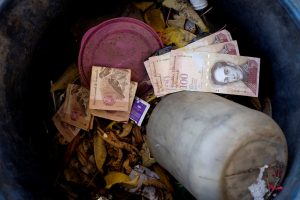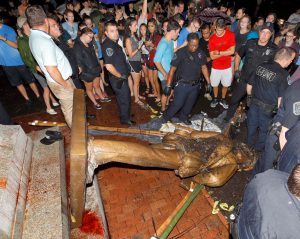
By Hyonhee Shin
SEOUL (Reuters) – Humanitarian aid for North Korea has nearly ground to a halt this year as the United States steps up the enforcement of sanctions, despite warnings of a potential food crisis and improving relations with Pyongyang, aid groups say.
International sanctions imposed over North Korea’s nuclear weapons programs technically do not cover humanitarian activities, and the United Nations recently adopted a U.S. proposal designed to streamline approval for aid shipments.
But strict interpretations of U.N. sanctions curtailing banking and shipping transactions with Pyongyang, as well as a travel ban for U.S. citizens, have effectively shut down the North Korea operations of most relief groups, according to a dozen officials at U.N. agencies and civilian organizations.
A ban on the shipment of any metal objects, from health diagnostic instruments to spoons to nail clippers, makes it nearly impossible to deliver even basic healthcare to North Korea, the officials say. Farm machines, greenhouses and ambulances, meanwhile, are sitting idle without spare parts.
“The sanctions regime is having unintended consequences on humanitarian operations and relief and assistance activities, notably the collapse of the banking channel and delays in moving supplies into the country,” Mazen Gharzeddine, who oversees North Korea operations at the United Nations Development Programme, told Reuters.
Total funding for U.N. and NGO activities in North Korea has dropped from $117.8 million in 2012 to $17.1 million so far this year, according to the U.N. Office for the Coordination of Humanitarian Affairs’ Financial Tracking Service.
The American Friends Service Committee (AFSC), a Philadelphia-based NGO that has run farming projects in North Korea for 20 years, said it had halted its programs this year for the first time because of the inability to ship supplies or travel to the country.
London-headquartered Save the Children, which provided food, healthcare and disaster relief, pulled out in November citing operational obstacles.
Geneva-based Global Fund, which had funnelled more than $105 million since 2010 to fight tuberculosis and malaria, closed its North Korea operations in June. It blamed risks in deploying resources and the lack of access and oversight for the withdrawal.
While exemptions are allowed for humanitarian aid, officials say they have faced delays of more than a year for even basic aid deliveries, as well as months waiting for U.S. government permission to travel to North Korea.
That is hurting efforts to help ordinary citizens in a country where some 40 percent of the population – or more than 10 million people – need humanitarian assistance and about 20 percent of children suffer from malnutrition, according to U.N. estimates.
SANCTIONS, DROUGHT HIT ECONOMY
This month, the International Federation of Red Cross and Red Crescent Societies (IFRC) said North Korea faces a “full-blown food security crisis” after state media warned of an “unprecedented natural disaster” due to the heat wave.
Another U.S. relief group, which requested anonymity due to the sensitivity of the issue, said it worried the heatwave could lead to crop damage and loss of life.
However, U.N. agencies and AFSC said it was too early to forecast any impact of the heatwave until the autumn harvest season, and satellite images show crops appear healthy compared to last year.
North Korea experienced a crippling famine in the 1990s when a combination of bad weather, economic mismanagement and the removal of fuel subsidies paralyzed its state-run rationing system, killing up to three million people.
North Korea’s economy contracted by 3.5 percent in 2017, the sharpest rate since the 1990s famine, as international sanctions and drought hit growth hard, South Korea’s central bank said last month.
When asked about sanctions’ impact on aid, a State Department spokesperson told Reuters sanctions will continue “until nukes are no longer a factor,” without elaborating.
U.S. President Donald Trump held an unprecedented summit with North Korean leader Kim Jong Un in June in Singapore and quickly declared the country no longer posed a nuclear threat. Despite positive words since from Trump, the two countries have struggled to agree on how to end the North’s weapons programs.
“We are dismayed that, just as there is a thaw in U.S.-DPRK relations, the U.S. government is doubling down on sanctions, effectively shutting down the work of U.S. NGOs working on the ground,” said Linda Lewis, who runs AFSC’s agricultural projects there. The DPRK stands for the Democratic People’s Republic of Korea, the North’s official name.
Lewis said when she applied for a special passport to travel to North Korea in October, it took her 10 days, but when she made a second request in May, she had to wait for 56 days.
DEATH BY A THOUSAND CUTS
Lack of transparency and restricted access have long been a hurdle for relief workers in North Korea, even before international funding dried up under Trump’s “maximum pressure” campaign against Pyongyang’s pursuit of nuclear and missile development.
Nearly 20 international civic relief groups were active as of 2010, but that number has more than halved, according to aid workers operating in North Korea.
Only a handful of mostly American NGOs now remain, complementing the work of the WHO, the U.N. Development Programme, U.N. World Food Program and UNICEF.
The U.N. had to stop nutrition support for kindergartens in North Korea in November due to the lack of funding. Its $111 million “2018 Needs and Priorities Plan” is nearly 90 percent under-funded.
After visiting North Korea last month, U.N. humanitarian chief Mark Lowcock said sanctions are exacerbating humanitarian problems. There was “very clear evidence” of aid needs, but funding was falling short, he added.
Seoul has not yet delivered on its pledge made last September to give $8 million to the WFP and UNICEF to support North Korean children and pregnant women.
South Korea will make a donation “at an appropriate time considering overall circumstances”, Unification Ministry spokeswoman Lee Eugene said.
Early this month, a U.N. panel that monitors sanctions against North Korea adopted U.S.-backed guidelines designed to facilitate humanitarian assistance to North Korea.
But aid officials say the rules still leave plenty of ambiguity.
For example, one U.S. NGO pointed to a provision that “strongly recommends” shipments be consolidated into one every six months, which it said was unfeasible for many groups.
“If the true intention is not to harm humanitarian efforts, then there should be more will and commitment on the part of every government … to make sure that humanitarian efforts go forth unimpeded,” an official at the agency said, requesting anonymity due to sensitivity of the matter.
“Truly, for humanitarian organizations, it is death by a thousand cuts.”
(Reporting by Hyonhee Shin. Editing by Soyoung Kim and Lincoln Feast.)












